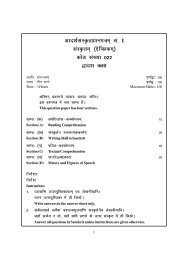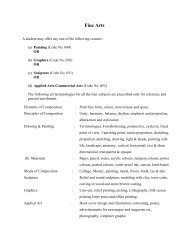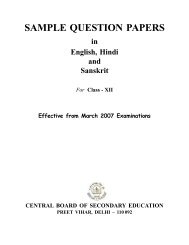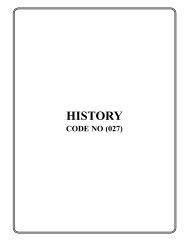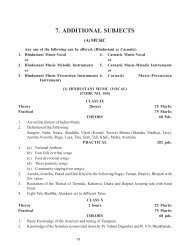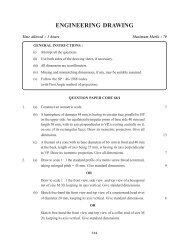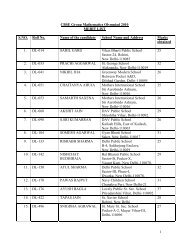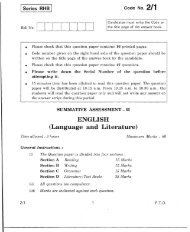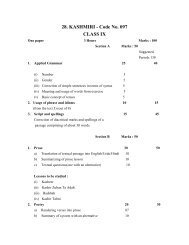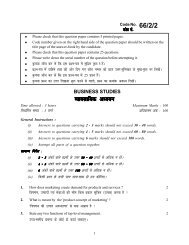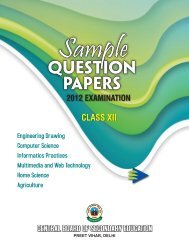A Text Book on Engineering Graphics - Central Board of Secondary ...
A Text Book on Engineering Graphics - Central Board of Secondary ...
A Text Book on Engineering Graphics - Central Board of Secondary ...
You also want an ePaper? Increase the reach of your titles
YUMPU automatically turns print PDFs into web optimized ePapers that Google loves.
Exercises<br />
Note: Take p = 5mm and other dimensi<strong>on</strong>s suitably<br />
MACHINE DRAWING<br />
1. Sketch freehand the c<strong>on</strong>venti<strong>on</strong>al representati<strong>on</strong> <strong>of</strong> internal and external 'V'<br />
threads.<br />
2. Sketch freehand the single start c<strong>on</strong>venti<strong>on</strong>al LH external square threads.<br />
3. Sketch freehand the single start c<strong>on</strong>venti<strong>on</strong>al RH external square threads.<br />
4. Sketch freehand the c<strong>on</strong>venti<strong>on</strong>al representati<strong>on</strong> <strong>of</strong> internal and external square<br />
threads.<br />
2.12 STUDS<br />
A stud is a cylindrical piece <strong>of</strong> metal having<br />
threads at both ends and is plain cylinder or<br />
square cross secti<strong>on</strong>/ square neck or plain<br />
cylinder or with collar in the central porti<strong>on</strong>.<br />
STUD<br />
Fig 2.41<br />
For c<strong>on</strong>necting two parts, <strong>on</strong>e end (metal end) <strong>of</strong><br />
the stud is screwed into a threaded hole in <strong>on</strong>e part and the other end (nut end) is passed through<br />
a clearance hole in the other part, so that the plain porti<strong>on</strong> <strong>of</strong> the stud remains within this hole. A<br />
nut is screwed <strong>on</strong> the open end <strong>of</strong> the stud. The porti<strong>on</strong> <strong>of</strong> the stud where nut is screwed <strong>on</strong> is<br />
called nut end and the other end <strong>of</strong> the stud is called metal end or stud end.<br />
Stud is a headless bolt and is used where sufficient space for bolt head is not available. The<br />
following fig 2.42 shows the view <strong>of</strong> a plain stud, stud with square neck and stud with collar.<br />
Ød<br />
d t o 1 . 5 d 2 d + 6<br />
(i) PLAIN STUD<br />
Ød<br />
d t o 1 . 5 d d 2 d + 6<br />
(ii) STUD WITH<br />
SQUARE NECK<br />
Fig 2.42<br />
74 ENGINEERING GRAPHICS<br />
2d+6<br />
d<br />
Ød<br />
1.5 d<br />
NUT END<br />
0.4 d<br />
(iii) STUD WITH<br />
COLLAR<br />
METAL END



